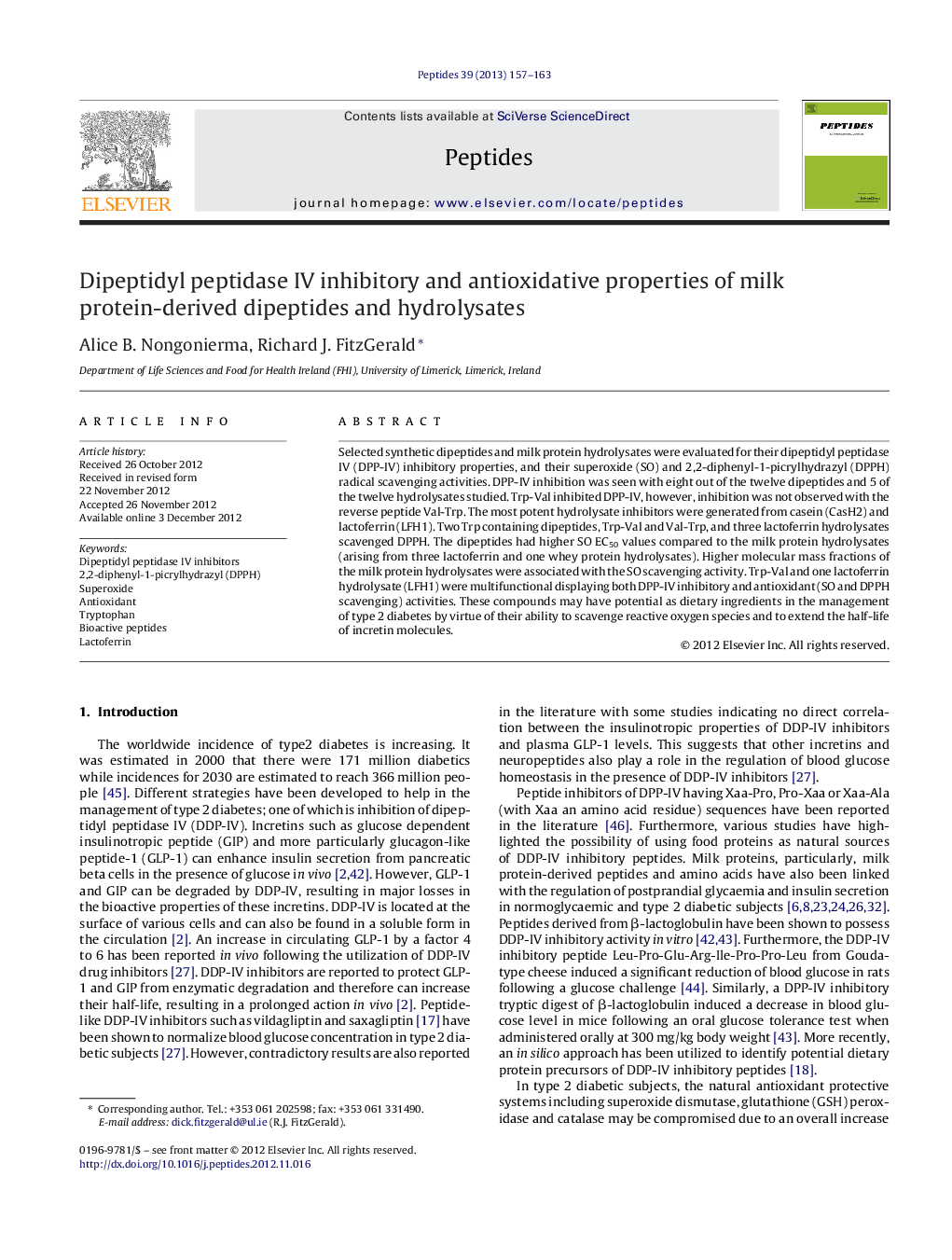| Article ID | Journal | Published Year | Pages | File Type |
|---|---|---|---|---|
| 2006296 | Peptides | 2013 | 7 Pages |
Selected synthetic dipeptides and milk protein hydrolysates were evaluated for their dipeptidyl peptidase IV (DPP-IV) inhibitory properties, and their superoxide (SO) and 2,2-diphenyl-1-picrylhydrazyl (DPPH) radical scavenging activities. DPP-IV inhibition was seen with eight out of the twelve dipeptides and 5 of the twelve hydrolysates studied. Trp-Val inhibited DPP-IV, however, inhibition was not observed with the reverse peptide Val-Trp. The most potent hydrolysate inhibitors were generated from casein (CasH2) and lactoferrin (LFH1). Two Trp containing dipeptides, Trp-Val and Val-Trp, and three lactoferrin hydrolysates scavenged DPPH. The dipeptides had higher SO EC50 values compared to the milk protein hydrolysates (arising from three lactoferrin and one whey protein hydrolysates). Higher molecular mass fractions of the milk protein hydrolysates were associated with the SO scavenging activity. Trp-Val and one lactoferrin hydrolysate (LFH1) were multifunctional displaying both DPP-IV inhibitory and antioxidant (SO and DPPH scavenging) activities. These compounds may have potential as dietary ingredients in the management of type 2 diabetes by virtue of their ability to scavenge reactive oxygen species and to extend the half-life of incretin molecules.
► Antioxidant and DPP-IV inhibitory dipeptides/milk-protein hydrolysates were studied. ► 8 dipeptides and 5 milk protein hydrolysates could inhibit DDP-IV. ► SO scavenging was seen with high molecular mass peptides. ► WV, VW and hydrolyzed lactoferrin were good DPPH scavengers. ► WV and hydrolyzed lactoferrin were both DPP-IV inhibitors, and SO and DPPH scavengers.
